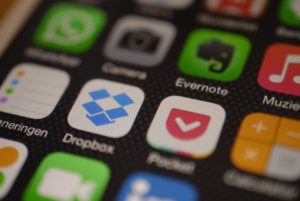Sourced From: http://www.momeomagazine.com/getting-your-digital-life-organized-with-evernote/
Digital clutter is a problem. It didn’t use to be a problem because we never used to spend as much time online as we do now. But between the hours spent on social media and reading our favourite blogs or news sites, we tend to accumulate quite a bit of digital clutter in the form of open browser tabs, bookmarked pages, and saved articles and links.
 If you are like me, the system you use to track the interesting articles you’d like to read later is to either: a) bookmark it (and therefore, clutter up your web browser bookmarking feature making it utterly useless) or b) leave the aforementioned interesting article open in a tab (making your laptop hopelessly slow and your web browser almost impossible to navigate).
If you are like me, the system you use to track the interesting articles you’d like to read later is to either: a) bookmark it (and therefore, clutter up your web browser bookmarking feature making it utterly useless) or b) leave the aforementioned interesting article open in a tab (making your laptop hopelessly slow and your web browser almost impossible to navigate).
That’s why I FINALLY started using Evernote!
An early adopter to this digital organizer I am not, but an enthusiastic one, I definitely am! For the 3 people on the internet who haven’t heard of Evernote, it’s basically a digital clipping tool that lets you save all that digital clutter in an organized manner.
It even lets you save a simplified version of the article so you can read it without all the extra clutter attached. You can learn all about it here: https://evernote.com!
One handy feature is that you can sync your Evernote between devices so you always have your digital notes with you, which is perfect for those occasions when you are stuck waiting for an appointment to start or a tardy colleague to arrive for a meeting. Remember all those browser tabs you have open on your laptop? Just pull out your smartphone with the Evernote app installed and you can catch up on your reading.
How to Use Evernote to Organize Your Digital Life:
Save Reading for Later — Create a notebook called Read Later and file all those open tabs in there. If you have a few different topics that you track for specific purposes, you may want to create a separate resource notebook, but otherwise, Read Later is a good catch-all for the interesting stuff you want to read later. Once you have read it, you can decide if you want to file it elsewhere or delete it.
Create Digital Resource Catalogues — Save all your topic-specific information into a topic notebook. As a writer, I save all writing resources, including e-books that I download, into my Writing Resources notebook. Think of this as a resource that you are going to use again and again so you want to spend the time to properly tag things so you can find them quickly later. So for example, you may want to tag research for client project articles as “research” and by the client name.
Archive Family Digital Notes — Use Evernote to save all those checklists and school notices you receive in digital format by child name. So, for example, when the school sends a pdf list of school supplies or details of an upcoming field trip, you can save it under that child’s name and then when you have a question about what type of file folder is required or what time you are supposed to pick-up and where you can access it without searching through your email.
Save Your Favorite Recipes — Clip your favourite recipes and tag them by category. If you have a friend who is also a good curator of recipes, invite her to share your recipe notebook and likewise you hers. Unlike Pinterest, Evernote lets you store the recipe details in your notebook so you can access it offline with a paid plan (which is handy for those ski vacations with sketchy access to wifi).
Organize Meeting Notes and Ideas — Before you lose that random piece of paper that you scribbled your ideas down on, take a picture and file it in an Evernote notebook. Evernote even lets you archive voice memos for later. However you choose to record your ideas, Evernote can pull them into an organized format, including adding notes to image files.